Artist and author Nancy J. Bailey bred and showed Somali cats for ten years (during a period of temporary insanity she says). She has trained cats for movies and TV, and has authored two books for cat lovers: 15 Rules For Clicker Training Your Cat and My Best Cat: A Furry Murder Mystery. She has provided us with 15 cat behaviors you need to understand in order to have a solid relationship with your feline family member.
#1 – Clawing
Cats have scent glands in their paw pads. When they are clawing your couch, they are usually marking territory. This is why they will return to the same spot over and over. They love corners and rough surfaces. It has caused many owners great consternation to have their items ruined by the claws of a cat. The traditional remedy is to declaw the cat, but thankfully, that solution is becoming passe’ among responsible pet owners. The removal of the end vertebrae of the toes may cripple the cat permanently, but at best, it often changes a cat’s mentality; and not for the better. Cats are very aware that their defenses are in their feet. Removing the claws will often exacerbate aggressive behavior. Instead, teach your cat to tolerate trimming its nails on a regular basis. When kept blunt, cat claws are much less damaging to treasured items. Also, be sure to provide attractive materials such as sisal scratching posts, where cats may vent their deeply compulsive scratching need without fear of retribution!
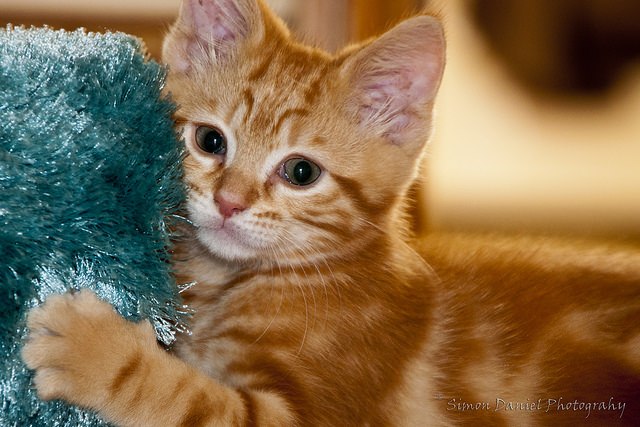
#2 – Spraying Urine
Another marking behavior, and not always relegated to just males. Spaying and neutering will often “fix” this problem, but again, one must be sure that the stimulation is removed. This means that whatever causes the spraying (encounters with strays that are not surgically altered, smelling old urine, etc) has been remedied.
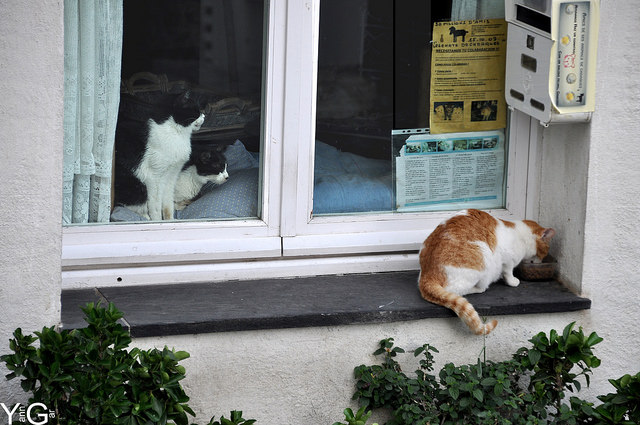
#3 – Urinating/Defecating Outside the Box
This is usually resolved by simply cleaning the litter box. Many cats just don’t like a dirty, smelly toilet. However, if after trying different types of litter and offering a regularly cleaned facility, your cat continues to misbehave in this fashion, other things must be considered. The first call to action is a visit to the veterinarian to make sure there isn’t a medical cause. Then, consider things in the environment that may be upsetting the cat. Has the box been moved? Is there noise in the house? Do you have construction going on? All these factors must be considered. Be aware that this type of behavior can be highly compulsive and once it starts, very difficult to remedy. Worse, other cats in the household may follow suit.
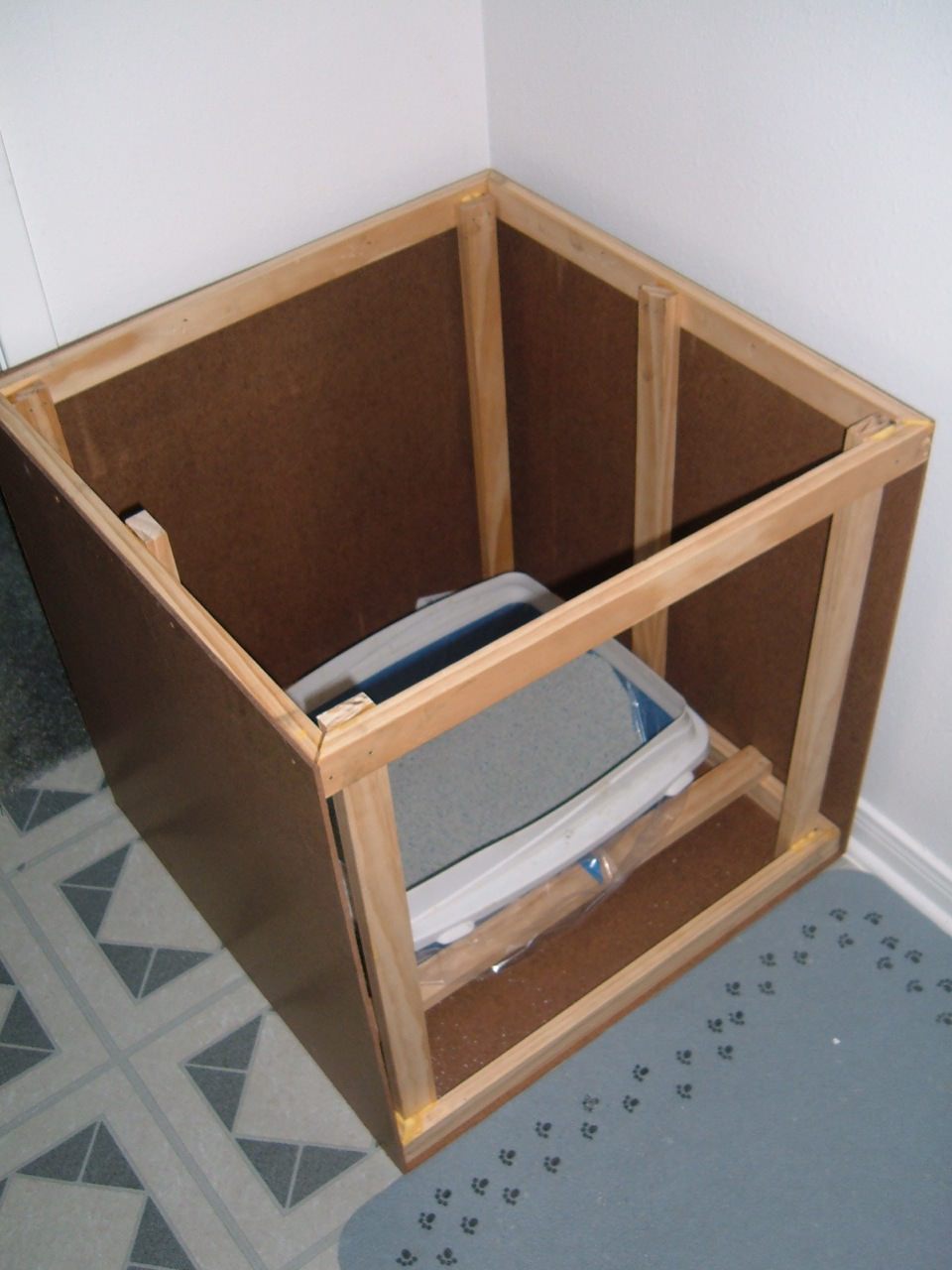
Click page 2 below for the next behaviors!
#4 – Defensive Scratching and Biting
Kittens should be raised with gentle handling, never encouraging the type of play-wrestling so popular among other kittens. If you raise a kitten to treat you like another kitten, you will have a cat that wants to trounce you regularly. However, if you have a cat that suddenly changes behavior and begins to attack you, it should be taken to a veterinarian to determine if pain or some other medical ailment is the cause. Ruling out a physical problem, the next solution is to spend 20 minutes a day making sure the cat gets aerobic exercise. Get a toy on a string, and get the cat moving until he has to stop and rest. If he is panting, you know his heart rate is up and he is getting what he needs. A little cardio goes a long way to cure frustrations… Just like with people.
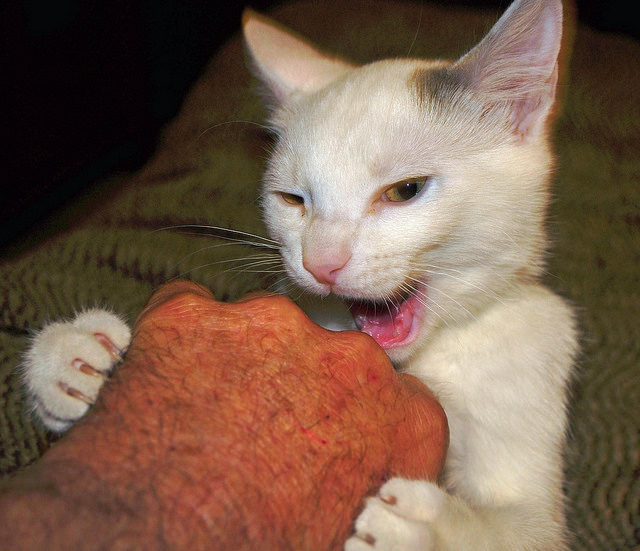
#5 – Hissing
Quite simply, this is cat talk for, “back off”! It should be heeded. Cats treasure their space and this should be respected.

#6 – Rubbing
Cats have scent glands in their cheeks and lips that cause them to “mark” favorite places, much as the clawing behavior signifies. If a cat is rubbing against you, he may be saying, “I was here,” or he may be claiming you as his own.
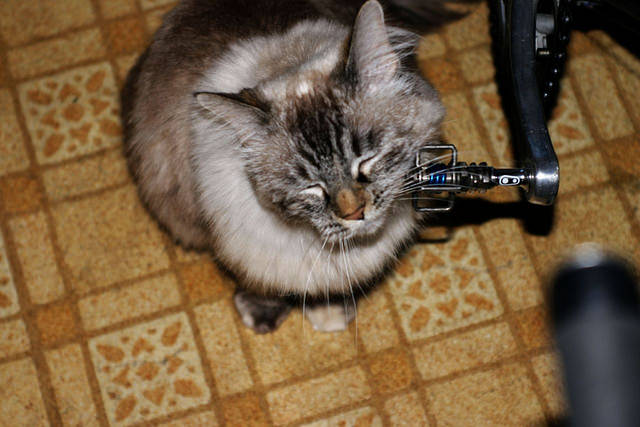
#7 – Climbing
Cats like to feel safe, and there are few places more natural and secure than a height from which to survey their world. A cat tree caters well to this behavior, and might keep him off your curtains.
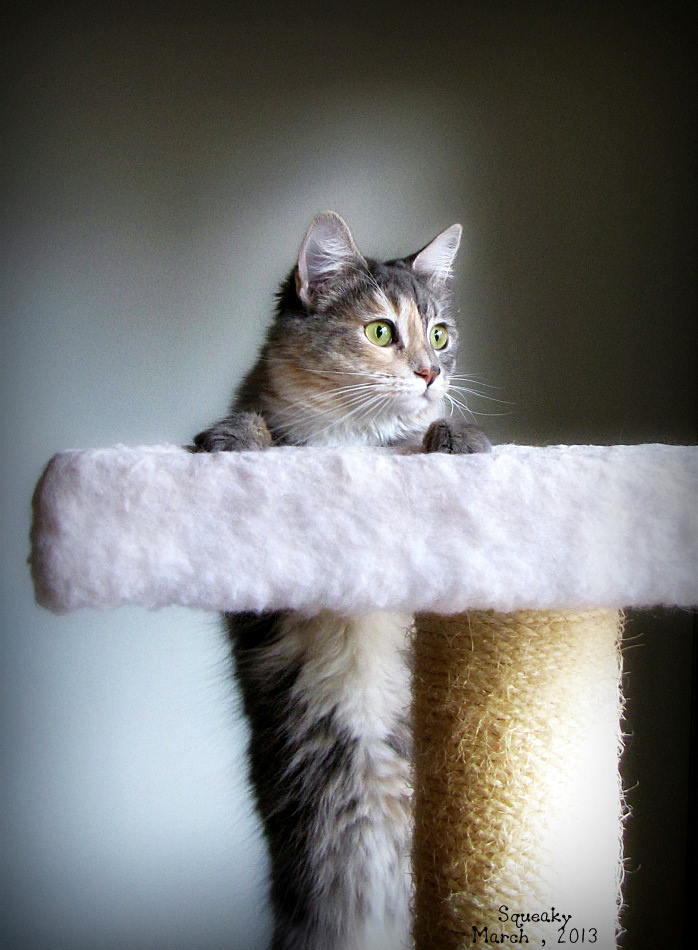
#8 – Hiding
You would do your kitty a huge favor by providing him with a dark and quiet sanctuary where he can rest undisturbed. It is deep within the feline nature to hide and rest during the afternoon, before beginning another night’s hunt.
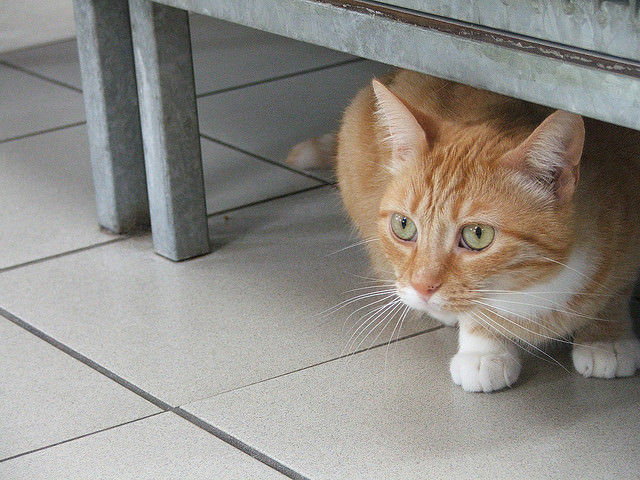
#9 – Chasing
Practice makes purrfect! The predator lives on, and even geriatric cats will often play host to this primeval playful side. This can be exploited to the fullest with some clever cat toys; a whirling feather on a stick or mouse on a string. Use the chasing instinct to your advantage and give your cat some exercise!
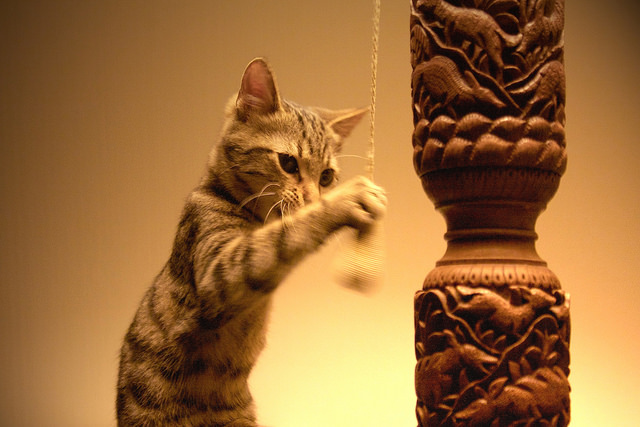
#10 – The Pounce
We’ve all seen that pose: Ears lowered, eyes blackened as the body hunches ever lower, rump wriggling, tail lashing in anticipation. The Pounce is quick and designed to dispatch hapless prey. It is one of the more delightful behaviors enjoyed by cat owners during play time.

#11 – Picky eating
As with other abrupt changes in behavior, refusing food deserves medical attention. However, many owners spoil their cats by tempting them with all sorts of delicacies, and then are surprised when the cat begins to walk away from them. Cats have very small systems and pet house cats are chronically overfed. If you are having troubles with this, try taking the food away for 24 hours and then offering it again for 20 minutes. If the cat does not eat, pick it up again. That is, unless you enjoy being a culinary slave to your finicky feline!
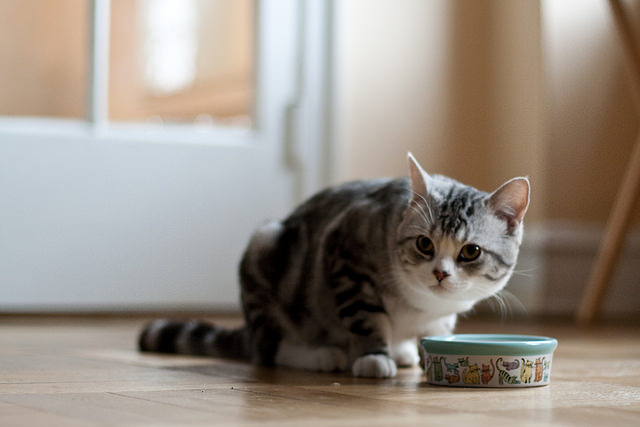
#12 – Burying food
When a cat turns away from its dish and begins to make burying motions, it is reverting to wild behaviors of covering its prey. Don’t be offended! He’s saving it for later.
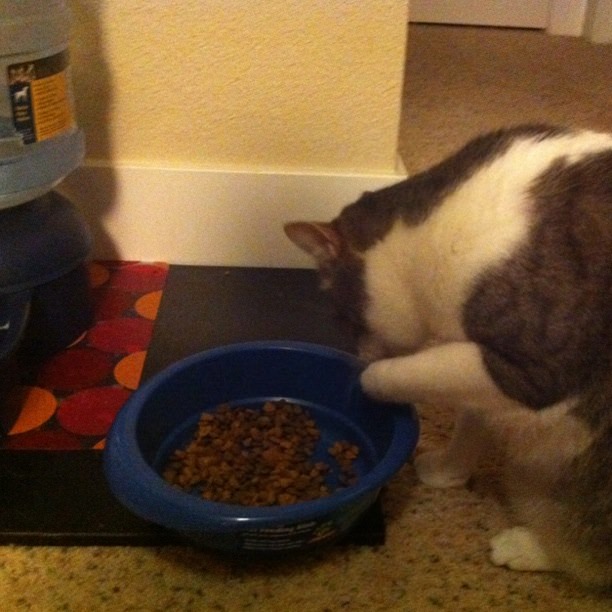
#13 – Delivering prey
Did you find a mangled mouse on your pillow? This is the greatest compliment ever. Your kitty is trying to take care of you.
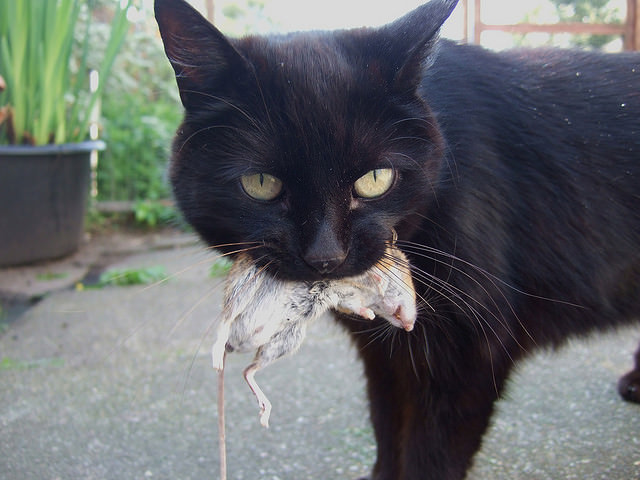
#14 – Purring and Kneading
This stems from the newborn days of nursing, when the paws knead the mother cat to stimulate milk flow. It is a sign of comfort and that all is well with the cat’s world… Or, he would like it to be.
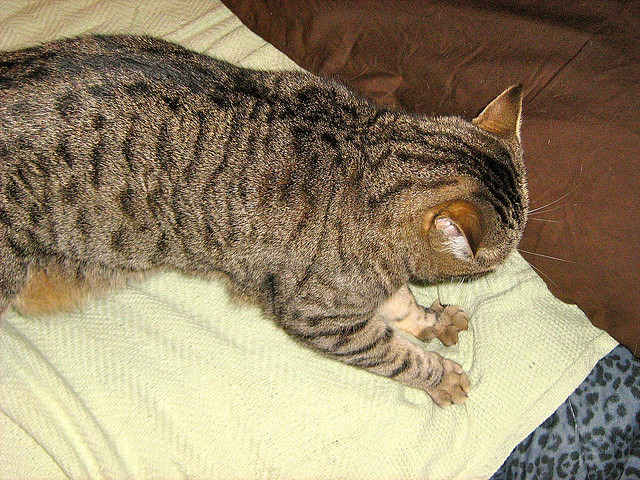
#15 – The Slow Blink
If your cat is gazing at you calmly, and your eyes meet, and he gives you a slow, deliberate blink, that is exactly what it seems. Your kitty loves you.

